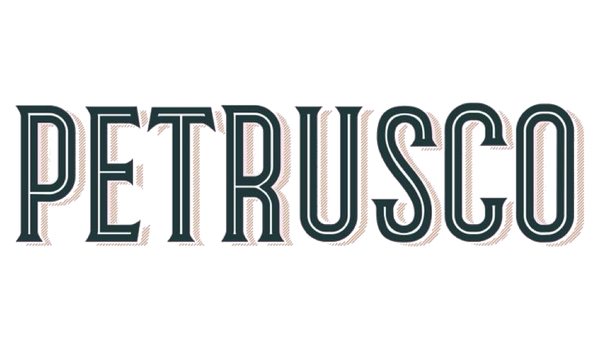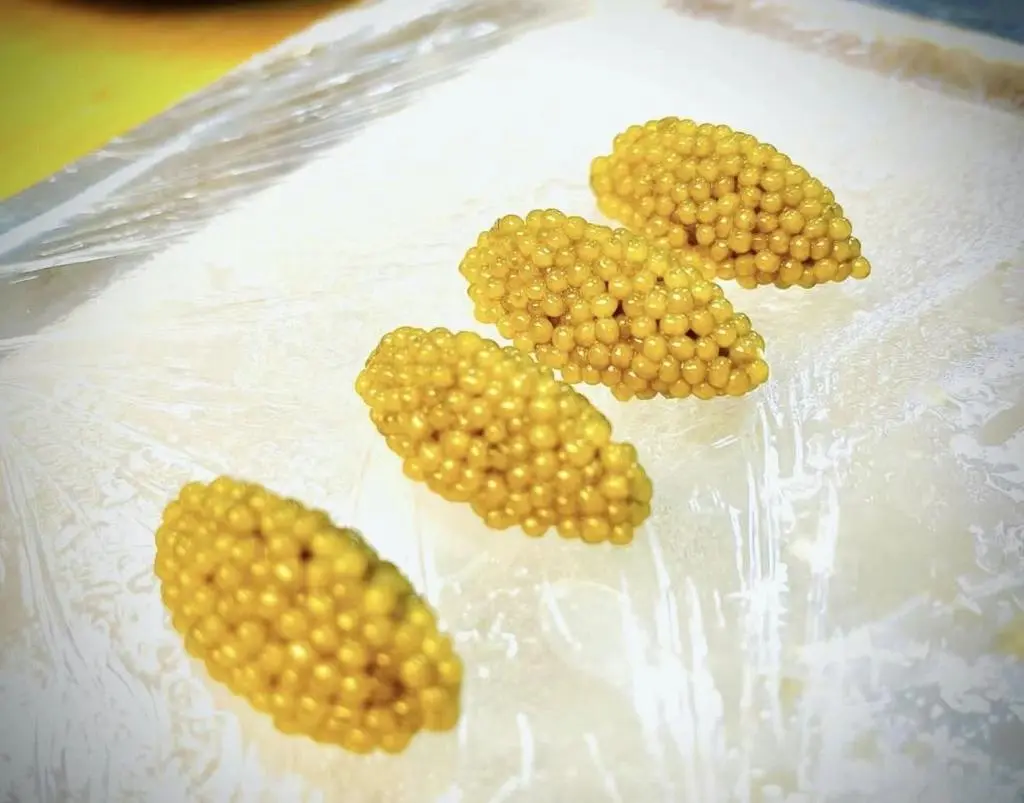Introduction to Caviar: A Delicacy of the Sea
Caviar is the fancy name for fish eggs, but not just any fish eggs – they’re specifically from sturgeon fish. Known as a luxury food, it’s like the ocean’s version of gold, often found at fancy parties and gourmet meals. This delicacy comes in different types and grades, each affecting its flavor, texture, and, of course, price. Starting your caviar journey might seem overwhelming at first. You’re not just picking fish eggs off a shelf. It’s about learning which type tickles your palate the right way. Whether you’re leaning towards the creamy smoothness of Beluga or the slightly nutty taste of Osetra, each type has its own character. Remember, caviar is more than just a posh snack; it’s an experience, a way to add a dash of luxury to your meals or celebrations. So, as we dive deeper into how to pick the best caviar for your taste buds and budget, keep an open mind, and prepare your palate for a trip to the luxurious side of the food world.
Understanding the Types of Caviar
When you’re looking to buy caviar, know that there are several types out there. The most famous caviar comes from sturgeon, but not all caviar is the same. The king of caviar is Beluga, which is known for its large, silky pearls. It’s creamy, with a rich taste that stands out. Then there’s Osetra, often seen as the middle ground. It offers a nutty flavor, with pearls that are a bit firmer. Next up is Sevruga, smaller in grain but packed with intense flavor. Besides these, you’ll find Kaluga, often dubbed as Beluga’s cousin, offering a similar luxurious taste.
Remember, the quality of caviar is also determined by its color, size, and texture. Lighter colors are typically more valued, but taste preference is personal. Keep in mind, there’s also American caviar, harvested from varieties like paddlefish and white sturgeon, providing a more approachable price point for beginners. So, when you’re out there looking, think about what you value: taste, texture, or maybe a bit of both. This knowledge will help you pick the best caviar for your palette and wallet.
Factors to Consider Before You Buy Caviar
When buying caviar, think about a few key factors to make sure you’re getting the best for your money. First, consider the type of caviar. Beluga, Oscietra, and Sevruga are top picks, each with unique flavors and textures. Next, look at the source. Caviar can come from the wild or be farmed. Wild caviar often has a richer taste but can be pricier and less sustainable. Farmed caviar is more eco-friendly and accessible. The grade of caviar is another point. Grade 1 caviar has firmer, larger eggs with a finer flavor. Grade 2 might be a bit softer and less uniform but still tasty. Lastly, consider the price. Caviar is famously expensive, but prices vary widely based on the type, grade, and source. Paying more doesn’t always mean better taste, so find a balance between quality and budget. Remember, good caviar should taste fresh, not overly fishy or salty.
How to Determine the Quality of Caviar
Determining the quality of caviar is like unlocking a treasure chest—you need to know what you’re looking for. First off, great caviar comes down to its size, color, texture, and flavor. The bigger the eggs, the better. High-quality caviar boasts a glossy sheen, ranging from dark gray to light golden. It should feel smooth, not mushy, and burst with a clean, slightly salty ocean flavor when you taste it.
Here’s a quick guide: Shelf life matters. Fresh caviar has a shorter shelf life and tastes better. Smell it; it should remind you of the sea but not be overwhelmingly fishy. Look at the ingredients. True caviar contains only roe and salt, anything else is a sign of lower quality.
Remember, the best caviar leaves a lasting impression with its delicate flavor and texture, so trust your senses when choosing.
The Best Times to Buy Caviar: Seasonality and Availability
When diving into the world of caviar, timing can be everything. You might think any time is a good time for caviar, but there’s a bit more to it if you’re aiming for the best quality and value. Caviar, the luxurious eggs from sturgeon fish, has its peak seasons. The traditional caviar harvesting period falls between late spring and early summer. This is when sturgeon are typically at their prime, making their eggs—the coveted caviar—even more desirable.
However, due to advancements in farming techniques, farmed caviar is now available year-round. Despite this, the classic principle of supply and demand still applies. Prices can fluctuate based on the season. During the holiday season, especially around New Year’s Eve, demand for caviar spikes. Prices tend to soar as a result. If you’re looking to get the best deal, buying off-peak, such as right after the New Year, could lead to some savings without compromising quality. On the flip side, buying during the peak of holiday festivities ensures you’re getting the freshest batch, as turnover is high due to increased demand.
Remember, while seasonality plays a role in caviar availability and pricing, factors like the type of caviar, its origin, and the supplier’s reputation also significantly impact what you end up with on your blini. Whether you’re planning a special occasion or just treating yourself, knowing these nuances can help you choose the right time to indulge in this delicacy.
Where to Buy Caviar: Retailers, Online Stores, and Specialty Shops
When looking to buy caviar, you’ve got a few options. Let’s break it down. Retailers, such as upscale grocery stores or gourmet food markets, often stock caviar. It’s convenient, but the selection might be limited. Online stores are your best bet for variety. You can browse different types of caviar from around the world without leaving your couch. Just make sure you’re buying from a reputable site to avoid getting low-quality caviar. Finally, specialty shops. These places are like treasure chests for caviar enthusiasts. Not only do they offer a wide range, but the staff usually knows their stuff. They can guide you, answer your questions, and let you in on the best caviar for your taste and budget. Each option has its perks, but remember, quality and freshness are key when picking where to buy your caviar.
Understanding Caviar Pricing: What Impacts the Cost?
When you’re looking to buy caviar, the price tag can be a bit of a shocker. But what makes some caviar cost as much as a small car, while others are more in the range of a fancy dinner out? It boils down to a few critical factors. First off, the type of fish matters a lot. Beluga, Ossetra, and Sevruga caviars, which come from sturgeon in the Caspian Sea, are typically the most sought after and, hence, the priciest. The rarity of the sturgeon species, along with the time it takes for them to mature and produce eggs, drives up the cost.
Next, the method of harvesting and processing the caviar adds to the price. Traditional methods, which involve careful selection and handling of the eggs, tend to yield a higher quality product but at a higher cost due to the labor involved. The age of the caviar also plays a role. Like a fine wine, some caviar gets better (and more expensive) with age.
Lastly, where you’re buying your caviar can affect the price. Importing caviar from traditional sources like the Caspian Sea countries usually involves hefty shipping costs and import taxes. Buying local or from sustainable farms might offer a lower cost, but make sure you’re not sacrificing quality for price.
Remember, expensive doesn’t always mean better. Focus on finding a reputable supplier who can provide detailed information about the source, processing, and storage of their caviar. This way, you’re more likely to enjoy your indulgence without feeling like you’ve spent more than you should.
Tips for Buying Caviar for the First Time
When buying caviar for the first time, don’t let the variety scare you. Start with understanding that the best caviar comes from the sturgeon species. But, not all caviar will break your wallet. You can find affordable options that still offer great taste. Focus on freshness; this is key. Look for caviar with a recent harvest date. The color should be bright, and the eggs should look firm, not mushy. Don’t get fooled by fancy packaging. What’s inside matters more. If possible, taste before you buy. This might not always be an option, but reputable stores often offer samples. Remember, the price can hint at quality, but it’s not the only indicator. Begin with smaller amounts to explore different types without a big commitment. Finally, ask questions. A trustworthy seller will have answers and help guide your choice. Follow these tips, and you’ll make a great first-time purchase.
How to Store and Serve Caviar After Purchase
After you’ve picked your caviar, storing it right keeps it fresh. Caviar should sit in the coldest part of your fridge, usually the back. Never freeze it; that ruins the texture. Plan to eat it within a few days of buying for the best taste. When serving, keep it cool. Use a bowl of ice to nest the caviar tin in. This keeps it at the right temp without chilling it directly. Serve caviar with a non-metal spoon, like one made from mother of pearl, to avoid a metallic taste. Small, blini pancakes, lightly buttered toast points, or even just a simple spoonful straight from the tin let you enjoy its flavor. Remember, caviar’s a treat. Enjoy it in small amounts to truly appreciate its unique taste.
Conclusion: Enjoying Your Caviar Experience
Enjoying caviar is about more than just its taste. It’s an experience, a luxury that’s savored and enjoyed slowly. To make the most out of your caviar experience, remember it’s all about the setting and the company. Keep it simple; a bit of blini or lightly buttered toast, a dollop of caviar, and maybe some crème fraîche. And of course, the right drink in hand - champagne or a crisp, cold vodka pairs beautifully. Share it with someone special or with a group of friends who appreciate the finer things. The key is to relax, take in the moment, and relish the unique flavors and the sense of luxury that comes with enjoying one of the world’s most esteemed delicacies. After all, caviar is not just food; it’s an occasion.

